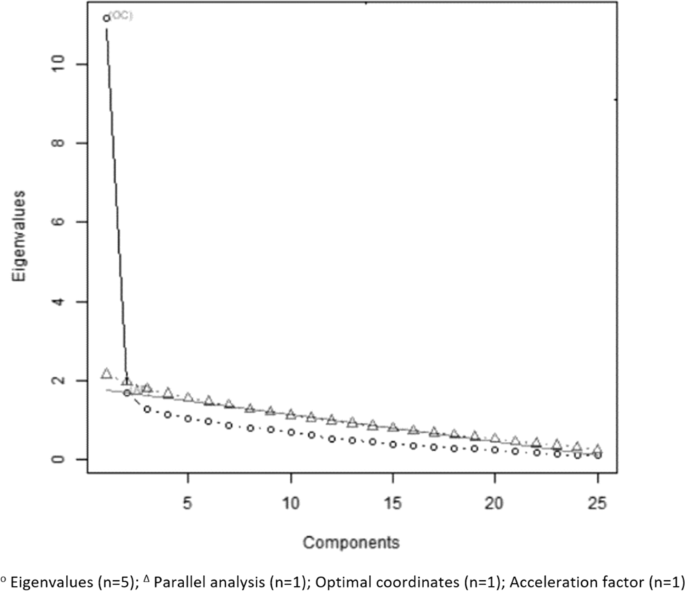Arnow B, Kenardy J, Agras WS. The Emotional Eating Scale: The development of a measure to assess coping with negative affect by eating. Int J Eat Disord. 1995;18:79–90.
Google Scholar
Tanofsky‐Kraff M, Theim KR, Yanovski SZ, Bassett AM, Burns NP, Ranzenhofer LM, et al. Validation of the emotional eating scale adapted for use in children and adolescents (EES‐C). Int J Eat Disord. 2007;40:232–40.
Google Scholar
Perpiñá C, Cebolla A, Botella C, Lurbe E, Torró M-I. Emotional eating scale for children and adolescents: psychometric characteristics in a Spanish sample. J Clin Child Adolesc Psychol. 2011;40:424–33.
Google Scholar
Vannucci A, Tanofsky-Kraff M, Shomaker LB, Ranzenhofer LM, Matheson BE, Cassidy OL, et al. Construct validity of the emotional eating scale adapted for children and adolescents. Int J Obes. 2012;36:938.
Google Scholar
Bektas M, Bektas I, Selekoğlu Y, Kudubes AA, Altan SS, Ayar D. Psychometric properties of the Turkish version of the Emotional Eating Scale for children and adolescents. Eat Behav. 2016;22:217–21.
Google Scholar
Reise SP. The rediscovery of bifactor measurement models. Multivariate Behav Res. 2012;47:667–96.
Google Scholar
Reise SP, Moore TM, Haviland MG. Bifactor models and rotations: exploring the extent to which multidimensional data yield univocal scale scores. J Pers Assess. 2010;92:544–59.
Google Scholar
Reise SP, Morizot J, Hays RD. The role of the bifactor model in resolving dimensionality issues in health outcomes measures. Qual Life Res. 2007;16:19–31.
Google Scholar
Rodriguez A, Reise SP, Haviland MG. Applying bifactor statistical indices in the evaluation of psychological measures. J Pers Assess. 2016;98:223–37.
Google Scholar
Boutelle KN, Braden A, Douglas JM, Rhee KE, Strong D, Rock CL, et al. Design of the FRESH study: a randomized controlled trial of a parent-only and parent–child family-based treatment for childhood obesity. Contemp Clin Trials. 2015;45:364–70.
Google Scholar
Boutelle KN, Rhee KE, Liang J, Braden A, Douglas J, Strong D, et al. Effect of attendance of the child on body weight, energy intake, and physical activity in childhood obesity treatment: a randomized clinical trial. JAMA Pediatr. 2017;171:622–8.
Google Scholar
Fairburn C, Cooper Z, O’Connor M. Eating disorders examination (16.0 D). Cognitive behavior therapy and eating disorders. New York: Guilford Press; 2008.
Stojek MM, Tanofsky‐Kraff M, Shomaker LB, Kelly NR, Thompson KA, Mehari RD, et al. Associations of adolescent emotional and loss of control eating with 1‐year changes in disordered eating, weight, and adiposity. Int J Eat Disord. 2017;50:551–60.
Google Scholar
Achenbach T. Manual for the child behavior checklist/4-18 and 1991 profile. Burlington (VT): University of Vermont, Department of Psychiatry; 1991.
Dutra L, Campbell L, Western D. Quantifying clinical judgment in the assessment of adolescent psychopathology: Reliability, validity, and factor structure of the Child Behavior Checklist for clinician report. J Clin Psychol. 2004;60:65–85.
Google Scholar
Team R. R: A language and environment for statistical computing. 2014. (R Foundation for Statistical Computing, Vienna, Austria, 2013).
Statistic I. SPSS 23.0 for windows (Chicago, IL, 2015).
Ruscio J, Roche B. Determining the number of factors to retain in an exploratory factor analysis using comparison data of known factorial structure. Psychol Assess. 2012;242:282–92.
Google Scholar
Kaiser H. The application of electronic computers to factor analysis. Educ Psychol Meas. 1960;20:141–51.
Google Scholar
Velicer W. Determining the number of components from the matrix of partial correlations. Psychometrika. 1976;41:321–7.
Google Scholar
Ledesma R, Valero-Mora P. Determining the number of factors to retain in EFA: An easy-to-use computer program for carrying out parallel analysis. Pract Assess Res Eval. 2007;12:1–11.
Raiche G, Walls T, Jagis D, Riopel M, Blais J-G. Non-graphical solutions for Cattell’s scree test. Methodology. 2013;9:23–9.
Google Scholar
Revelle W, Rocklin T. Very simple structure: an alternative procedure for estimating the optimal number of interpretable factors. Multivar Behav Res. 1979;14:403–14.
Google Scholar
Hancock GR, Mueller RO. Rethinking construct reliability within latent variable systems. Structural equation modeling: Present and future. Lincolnwood, IL: Scientific Software International Inc.; 2001. p. 195–216.
Bonifay WE, Reise SP, Scheines R, Meijer RR. When are multidimensional data unidimensional enough for structural equation modeling? An evaluation of the DETECT multidimensionality index. Struct Equ Model Multidiscip Jl. 2015;22:504–16.
Google Scholar
Cortina JM. What is coefficient alpha? An examination of theory and applications. J Appl Psychol. 1993;78:98.
Google Scholar
McDonald RP. Test theory: A unified treatment, Psychology Press, 2013.
Bentler PM. Covariance structure models for maximal reliability of unit-weighted composites. Handbook of latent variable and related models. Vol. 1. Amsterdam, The Netherlands: Elsevier; 2007.
Bentler PM. Alpha, dimension-free, and model-based internal consistency reliability. Psychometrika. 2009;74:137.
Google Scholar
Kelley K, Pornprasertmanit S. Confidence intervals for population reliability coefficients: evaluation of methods, recommendations, and software for composite measures. Psychol Methods. 2016;21:69.
Google Scholar
Devellis R. Scale development: theory and applications. 2nd Edition (Applied Social Research Methods). Thousand Oaks, CA: Sage Publications, Inc; 2003.
Lindquist K, Barrett L. Emotional complexity. Chapter. In: Lewis M, Haviland-Jones JM, Barrett LF, editors. New York: Guilford; 2008. p. 513–430.
Lane RD, Schwartz GE. Levels of emotional awareness: a cognitive-developmental theory and its application to psychopathology. Am J Psychiatry. 1987;144:133–43.
Google Scholar
Flora DB, Curran PJ. An empirical evaluation of alternative methods of estimation for confirmatory factor analysis with ordinal data. Psychol Methods. 2004;9:466.
Google Scholar
Crutzen R, Peters G-JY. Scale quality: alpha is an inadequate estimate and factor-analytic evidence is needed first of all. Health Psychol Rev. 2017;11:242–7.
Google Scholar
McNeish D. Thanks coefficient Alpha, we’ll take it from here. 2017.

